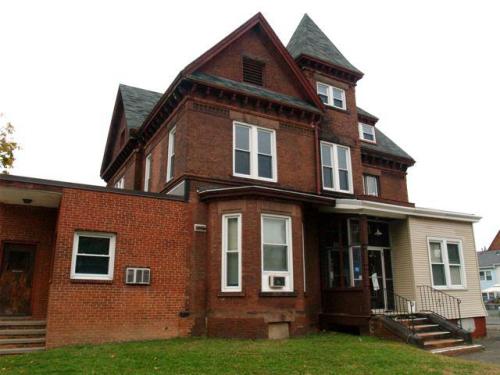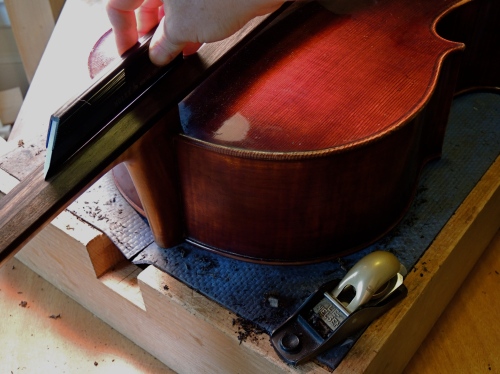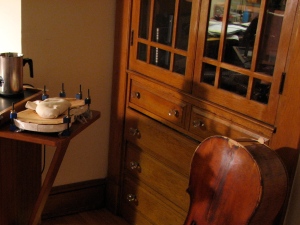Soundpost patch? Huh?
Whenever I have to tell a client that their instrument is in need of a soundpost patch, I am prepared to provide an explanation. Usually that means pulling up a portfolio of photos, or even reaching for an actual project undergoing the procedure.
A patch is the correct repair for a crack running through the soundpost area. For the purpose of this essay, I’m referring to a crack in the top of the instrument. Cracks in other areas of the top may be reinforced by the installation of small cleats to the surface of the wood, like this:
A patch is a more invasive procedure, but the location of a crack in the soundpost area necessitates its implementation. Wood that is compromised by a crack or, as we will see, worm damage, will be vulnerable as it’s subjected to the downward pressure of the bridge, and the upward pressure of a properly fitted soundpost. In addition, the area must be free of protruding cleats so that a soundpost can be installed and its placement adjusted as necessary.
A patch requires removing damaged wood and then inserting healthy wood which is shaped flush to the surrounding area. In the end it looks like this:
A recent project of mine provided an opportunity to take some illustrative pictures. This violin did not have a crack so much as it had a concentration of worm runs in the soundpost area. Thankfully, this little worm exercised its voracious appetite mostly below the varnished surface, so a patch was the appropriate remedy. As an aside, remediating worm damage is a topic that inevitably provokes animated, or shall I say agitated, discourse among my colleagues, frequently followed by the consumption of copious amounts of alcohol.
Careful planning is the first step in assuring a successful repair (violin restorer Truth #1). I have seen patches fail because they were poorly planned and/or poorly executed. Here’s one that suffered on both accounts:
The forward edge of the patch did not hold, leading to serious sinking in the bridge area.
So back to my current project. Here is how I planned the patch, so that the bridge and post would be situated at the strongest point. Some of the worm runs are visible where they had been filled by a previous repairer.
With the top of the instrument fully supported by a plaster cast, damaged wood is carefully removed, creating a kind of bathtub shaped concavity. When I’m done, it measures .5mm at it’s thinnest in the center – thin enough to see light radiate through when held in front of a lamp. Photo bomb by the ex-worm that shall not be named.
New wood is chosen to match the old. The patch wood is oriented so the grain lines up nicely with the original. Rough fitting of the new wood is done with a sharp knife or chisel. A dusting of chalk in the patch bed helps reveal high spots as the patch approaches its final fit. Final fitting is done with a very sharp scraper, eliminating any ridges or high spots left by the knife. Small cleats, temporarily glued to the instrument top ensure that the patch is placed in exactly the same position as it’s being fitted and then, as it’s glued in.

When the patch is fitting perfectly, the surfaces are brushed free of chalk and it’s glued in with hot hide glue. Later, the cleats will be removed and the new wood will be shaped down to a thickness consistent with the surrounding area. Here’s the finished patch. I’ve added a couple of cleats at either end where the grain runs out, for extra reinforcement.
This is a very straightforward sound post patch. Since the damage did not migrate through to the varnish side, there was only a small bit of filling and retouch to achieve an excellent result.
Just a few last words about soundpost patches in violins. An instrument with a well-executed patch in the top can be a very healthy instrument indeed. (Please note – a patch in the back may warrant a different kind of consideration, but that’s another topic). An instrument with a soundpost patch in the top is not going to suffer tonally. If anything, healthy wood where there was once deterioration and/or damage is more likely to restore the integrity of the structure, and hence, facilitate a favorable tone production.


















































